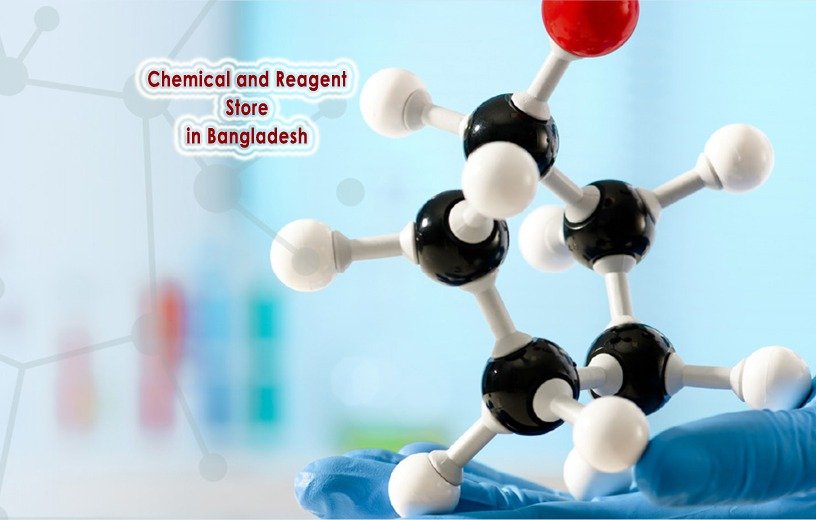- Water Testing Meters
- Anemometer
- Length & Distance Meter
- Multimeter & Clamp Meter
- Light and Sound Meter
- Slide Calipers & Screw Gauge
- Thermometer & Hygrometer
- Milk Testing Meters
- Paper, Grain & Wood Testers
- Stopwatch & Timers
- Soil Testing Meters
- Refractometers & Analyzer
- Magnetic Compass
- Tachometer & Megger
- Thickness & Dia-Meters
- Other Meter And Accessories
Proper Storage of Chemicals in the Laboratory

Proper storage of chemicals in the laboratory is very important for proper use, handling, and ensuring a safe environment. In this article, we are going to know how to proper storage of chemicals in the Laboratory.

Storage of Chemicals in Laboratory
We should be implemented the following general suggestions for the safe storage of chemicals in the laboratory.
- The number of chemicals specified by NFPA 45 and OSHA should be stored within a laboratory.
- Large quantities of chemicals (i.e., more than one gallon) must be stored in a separate storage area. Transfer of flammable liquid from five-gallon or larger metal containers may not be done in the laboratory.
- Chemicals should be stored at the temperature and humidity levels recommended by the manufacturer. Chemicals should not be stored near heat sources, such as steam pipes or laboratory ovens. Chemicals should not be stored in direct sunlight.
- Date of receipt of chemicals and when to open. Expiry dates for time-sensitive chemicals should also be included.
- Visual inspection of the material and its container should be conducted routinely. Indications for disposal include Cloudiness in liquids, Material changing color, Evidence of liquids in solids or solids in liquids, “Puddling” of material around the outside of the container, pressure build-up within the bottle, and Obvious deterioration of the container.
- Each chemical should have a specific storage area and be returned there after use.
- Bulk quantities of flammable materials should not be stored in the laboratory.
- Laboratory shelves should have a raised lip along the outer edge to prevent containers from falling.
- Never allow chemical containers to extend over the edge of the shelf.
- Liquid or corrosive chemicals should never be stored on shelves above eye level.
- Glass containers should not touch each other on the shelves.
- Secondary containers or trays should be used for chemical storage whenever possible to minimize the flow of material should a spill or rupture occur.
- Round bottom flasks should always be supported properly in cork rings or by other means to keep them from tipping.
- Adequate security must be provided so that unauthorized personnel does not have access to hazardous materials.
- Chemicals may not be stored on the floor for any amount of time.
- Chemicals no longer needed for research purposes may be offered to other labs on the same campus or must be disposed of in accordance with campus regulations.
- Flammable materials must never be stored in domestic-type refrigerators. Only explosion-proof or flammable material refrigerators should be used for storage of these chemicals within a laboratory environment.
- Refrigerated chemicals must be tightly capped to reduce vapors and alleviate odors. Flasks stoppered with cork, rubber, or glass should be wrapped with Parafilm to reduce leakage.
- Inventory the materials in refrigerators frequently to avoid overcrowding with materials that have long since been forgotten. Also, make it a point to defrost refrigerators occasionally so that chemicals do not become trapped in unique ice formations!
- Before storing materials in a refrigerator, ensure that refrigeration is necessary. Never store peroxide formers in a refrigerator.
- Fume hoods should not be used as general storage areas for chemicals. This may seriously impair the ventilating capacity of the hood.
- Gas cylinders must be securely strapped to a permanent structure (wall, lab bench, etc.). When they are not in use they should be capped.
Segregation of Chemicals Based on Hazard Classes
Incompatible materials must be separated according to hazard class. Hazards are indicated on both the chemical container label and the safety data sheet (MSDS) that accompanies the chemical Chemicals should, at a minimum, be divided into the following major categories:
- Flammables
- Oxidizers
- Acids
- Bases
- Corrosives
- Highly Reactive
- Acutely Toxics/Regulated Materials
- Low Hazard
Additional considerations for chemical segregation include:
Many chemicals present multiple hazards and thus must be further separated into the major hazard classes listed above.
- Segregation should start with flammability – all flammable liquids should be stored in a flammable cabinet or an approved flammable storage refrigerator. Flammable solids should be stored in a cool dry location away from any potential sources of ignition.
- Oxidizers and explosives should be segregated, especially from flammables, as they may contribute significantly to a fire.
- Water-reactive material must be stored in a manner that prevents exposure to water and/or high humidity. Air reactivates must be stored under inert gas or in another approved manner that prevents exposure to the atmosphere.
- Corrosive materials should be segregated into acids and bases. Acids should be further segregated as either organic or inorganic.
- Some materials, such as controlled substances and acutely toxic chemicals, may require secure locked storage within a designated storage area. Segregate by hazard class, then restrict access.
Peroxide Forming Materials of Chemicals:
Peroxide-forming materials are chemicals that react with air, moisture, or impurities to form organic peroxides. Organic peroxides are also formed in these materials during evaporation or distillation.
Peroxides formed by materials in the lab can be extremely sensitive to shock, sparks, heat, friction, impact, and light. Exposure to these elements can result in a violent explosion. The friction from unscrewing the cap of a container of a peroxide-containing chemical can provide enough energy to cause a severe explosion.
Use and Storage of Peroxide Formers
- Visually inspect liquid peroxide-forming materials for crystals or unusual viscosity before opening, paying special attention to the area around the cap. Peroxides can form upon evaporation and may crystallize on the threads under the cap. Do not open the chemical container if peroxide formation is suspected.
- Date all peroxide-forming materials with the date received, and the expected shelf life. Chemicals such as diisopropyl ether, divinyl acetylene, sodium amide, and vinylidene chloride should be discarded after three months. Chemicals such as dioxane, diethyl ether, and tetrahydrofuran should be submitted to Environmental Management (a division of IUEHS) for proper disposal after one year.
- Store all peroxide-forming materials away from heat, sunlight, and sources of ignition. Sunlight accelerates the formation of peroxides.
- Secure the lids and caps on these containers to discourage the evaporation and concentration of these chemicals.
- Never store peroxide-forming materials in glass containers with screw cap lids or glass stoppers. Friction and grinding must be avoided. Also, never store these chemicals in a clear glass bottle where they would be exposed to light.
- If crystal formation is observed within the container or around the lid, do not move or attempt to open the bottle. Call IUEHS for proper disposal.
- Never distill an ether unless it is known to be free of peroxides.
Source of Information: Indiana University




